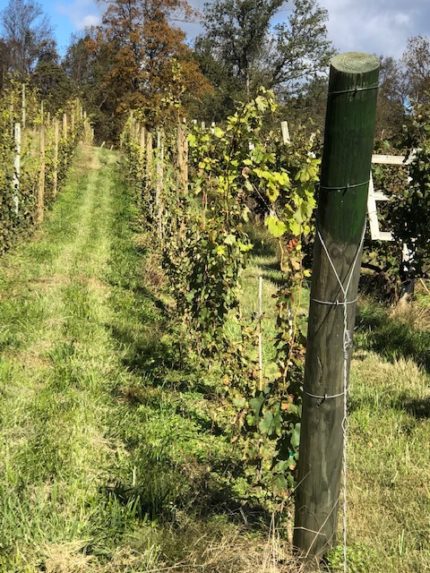Virginia’s wine industry has undergone a remarkable transformation, described by Stephen Barnard, former winemaker at Keswick Vineyards and president of the Monticello Wine Trail, as nothing short of “exponential,” as quoted in The Daily Progress.

Six years ago, the Virginia Wine Board invited me to celebrate the Inaugural Harvest Party, a new tradition that was formed to celebrate the past, present and future of Virginia wine. Created by the Virginia General Assembly in 1984 as part of Virginia’s Department of Agriculture and Consumer Services, the Virginia Wine Board promotes the interests of vineyards and wineries in the Commonwealth through research, education, and marketing.
Since then, wine has become nearly a $2 billion industry with an annual production of approximately two million gallons of wine and Virginia ranks as the 10th largest wine-producing state in the U.S. and the second largest on the East Coast.
It’s been fun to see the progress and I’ve had the chance to dive in over the years, but it had been a while since I checked back in.

Quick History
First a little about the State of Virginia and its place in North American wine history, which predates our country itself. At one time, planting vineyards was a state mandate. In 1762, Charles Carter proved it was possible to grow wine grapes successfully in Virginia. Twelve years after English colonists settled in Jamestown, the Virginia House of Burgesses passed Act 12, requiring each male colonist to plant and tend at least 10 grapevines. In the 1800s, Thomas Jefferson started a vineyard and winery near Monticello. Virginia kept showing progress through the 19th century until Prohibition in 1920 killed all progress.
Things began to look up in the late 1950s when wineries began to plant experimental grapes with success. By the 1970s, six new wineries existed, and European winemakers started to see potential in the region. In 1976, well-known Italian Winemaker Gianni Zonin, hired Gabriele Rausse to grow and harvest grapes near Charlottesville and established Barboursville Vineyards. He is credited with helping to establish 5 more vineyards. By 1995, Virginia had 46 wineries. By 2005, there were 107. Today, Virginia is home to nearly 300 wineries.
With over 4,000 acres of grapes that span the state, Virginia is home to 10 regions and 8 distinct AVAs including Blue Ridge, Monticello, George Washington Birthplace, Virginia’s Eastern Shore, Virginia Peninsula, Middleburg, and Shenandoah Valley.

About Early Mountain
I was recently re-introduced to Virginia wines when I received samples from Early Mountain Vineyards, a 350-acre property on the historic Monticello Wine Trail dating back to the 18th Century.
It had many iterations over time, but it was acquired in 2010 by Jean Case, and her husband, Steve, renovated and re-opened under the Early Mountain name. The name “Early Mountain” is a reference to the region’s Blue Ridge Mountains and reflects the founders’ belief in the potential of Virginia wines. The Cases had a vision that the winery would expand to a destination that would celebrate Virginia’s winemaking potential. The focus was on producing wines that showcased the unique terroir of Virginia, with an emphasis on both traditional and innovative winemaking techniques.
The Wines
The winery is known for its Petit Manseng and Cabernet Franc wines.
2021 Early Mountain Petit Manseng, $45 – this is a blend of 98 percent Petit Manseng and 2 percent Sauvignon Blanc. I tasted notes of tropical fruit, candied ginger, honey, and almonds.
2022 Early Mountain Shenandoah Valley Cabernet Franc, $34 – I’m a big fan of a well-done Cabernet Franc and this fits the bill. The winery began the strategy in 2017 of blending three vineyard-specific wines and two regional blends. The wine spends nine months on the lees and time aging in barrel. Nice red fruit, earth, leather, licorice, and herbal notes.
Virginia’s wine journey, marked by exponential growth and resilience, reflects a captivating evolution from historical mandates to its present place in the industry.



